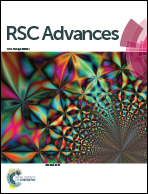3D-printing Ag-line of front-electrodes with optimized size and interface to enhance performance of Si solar cells†
Abstract
The power conversion efficiency (PCE) of a Si solar cell strongly depends on the line width (LW) of the Ag front electrode lines and the quality of the Ag/Si interface (ASI). However, the correlation between these two aspects and the cell efficiency has not been systematically investigated before because of the difficulty to control the LW of the electrode line. In this work, a self-designed 3D-printing equipment was built. Based on it, we implement the printing of electrode lines with the controllable LW by systematically investigating various parameters, including the rheological characteristics of the silver paste and the printing parameters, such as nozzle inner diameter, pressure, stage speed and gap between nozzle and wafer. When applying electrode lines with different LWs on Si solar cells, a nearly linear relationship between the cell efficiency and the LW was found. Notably, a LW of 40 μm was achieved by using a nozzle with the inner diameter of 100 μm and controlling the printing parameters. When 3D-printed Ag front electrode lines with the LW of 40 μm were applied on Si solar cells, an about 1% efficiency improvement was implemented compared with the industrial Si solar cell. This efficiency improvement not only originated from the increasing radiation area by the narrower LW, but more importantly from the optimized ASI confirmed by the sectional TEM images. This study provides helpful guidance for future fabrication of front electrodes with optimized LW and ASI to improve the PCE of Si solar cells.


 Please wait while we load your content...
Please wait while we load your content...